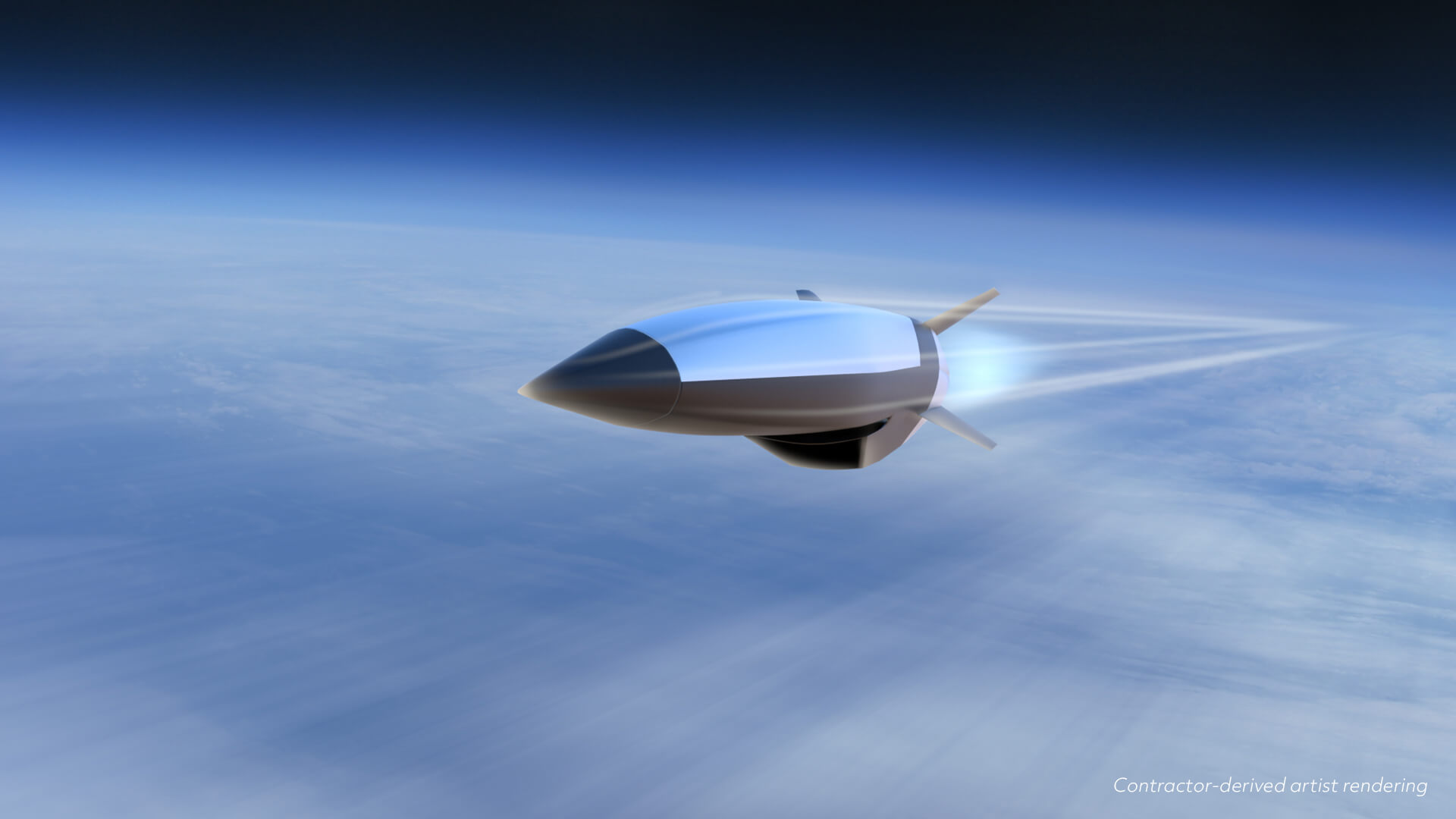Russia is aiming to arm its Air Force with new wing-borne hypersonic cruise missiles, reported the country’s Interfax news agency, citing the force’s commanding officer.
In an interview with the Russian defense ministry’s newspaper, Sergei Kobylash, the Russian commander, said that the development and delivery of all aviation weaponry, including new cruise hypersonic missiles, are being done in the interests of long-range aviation.
The scramjet engines allow the missiles to travel at extremely high speeds, making them harder to take down than regular cruise missiles. The nuclear triad of Russia includes a fleet of long-range bombers that can fire both nuclear and conventional missiles
The Russian commander, however, did not provide the full details of the new hypersonic missile, including its range.
The Kinzhal KH-47M2 hypersonic missile has already proven destructive in Ukraine, where Russian Mig-31s are firing them against Ukrainian targets. The missiles have been described as a massive challenge to Ukraine’s air defense forces.

Additionally, many Russian politicians and commentators have threatened to launch such missiles against western countries. The Russian Ministry of Defense recently reported that an intercontinental hypersonic “Avangard” missile unit had begun combat duty in the Orenburg region.
Defense Minister Sergey Shoigu recently said that Russia has begun launching serial delivery of Tsirkon/Zircon hypersonic missiles to the Russian Navy.
“We have launched serial deliveries of the Navy-based Tsirkon hypersonic missiles,” Shoigu said. “The frigate Admiral of the Fleet of the Soviet Union Gorshkov with top-notch Tsirkon seaborne hypersonic missile systems undergoes final preparations before embarking on a mission in the world ocean.”
President Vladimir Putin also stated that Admiral Gorshkov, equipped with Tsirkon hypersonic missiles, would start combat duty in January 2023. Putin also emphasized that Russia would maintain battle preparedness and improve the nuclear triad, which is Russia’s primary guarantee of sovereignty.
Hypersonic weapons can travel at least Mach 5 (five times the speed of sound). The hypersonic glide vehicle and the hypersonic cruise missile are the two main types of hypersonic weapons.
A hypersonic glide vehicle (HGV) is a ballistic missile warhead that can maneuver and glide at hypersonic speeds. It is employed on ballistic missiles to substantially alter their trajectory.
Conventional ballistic missiles follow a known ballistic trajectory and are vulnerable to interception by the most advanced anti-ballistic missile (ABM) systems. HGV makes them unpredictable, letting them avoid air defenses.
The HGV is fired from a rocket and glides to its destination. The hypersonic cruise missiles are fueled by high-speed, air-breathing engines, or “scramjets,” after identifying their objective.
Hypersonic weapons, unlike ballistic missiles, do not adopt a ballistic trajectory and can maneuver on route to their destination. Hypersonic missiles can evade detection by current air defense systems due to their speed, mobility, and low flight altitude.
According to a former Russian general who was crucial in the takeover of Crimea in 2014, the escalating Ukrainian attacks inside Russia cannot be halted.
Outdated Soviet Union systems are not ready to handle hostile unmanned aerial vehicles (UAVs) and the extensive usage of High-Mobility Artillery Rocket Systems, according to a Telegram message by Igor Vsevolodovich Girkin.
He claimed that attacks on critical Russian sites would also become “more frequent” due to increased military support from NATO nations. Girkin noted that Russian air defense was “ready for the last colonial war” at the start of the current conflict.
And as a result, the enemy can now “cheaply and cheerfully” attack strategic targets deep inside Russian territory using disposable kamikaze assault vehicles, with the Russian air defense entirely or partially unable to stop them, he added.

His concerns follow a Russian Ministry of Defense announcement that on December 26 at 1:35 a.m. local time, a Ukrainian drone aiming towards Russia’s Engels-2 air base, more than 350 miles away from the closest Ukrainian-controlled area, was taken down.
Despite the drone being shot down, three Russian personnel were killed by the drone’s debris, as previously reported by the EurAsian Times.
Girkin pointed out that expecting Russia’s military design bureaus and military-industrial complex firms to create and launch production of wholly new air defense systems that consistently defend the skies from ‘harmful trifles’ at the speed of a waltz is, at best, naive.
Additionally, the military-political leadership of the Russian Federation does not demonstrate that it is capable of or ready to launch a devastating combined-arms attack against the enemy “in his lair,” the former Russian general said.
- Contact the author at ashishmichel(at)gmail.com
- Follow EurAsian Times on Google News




